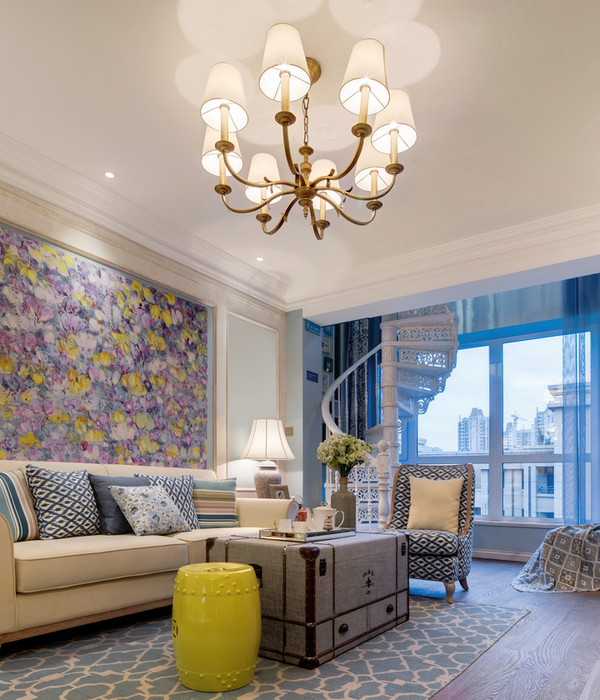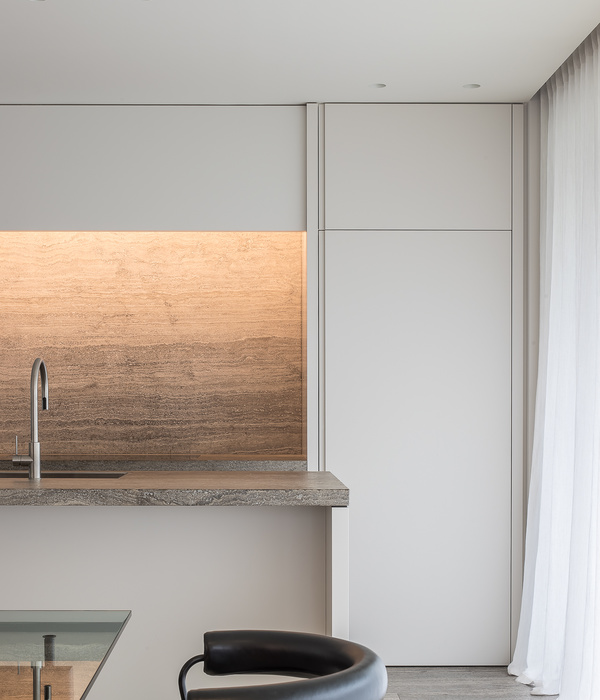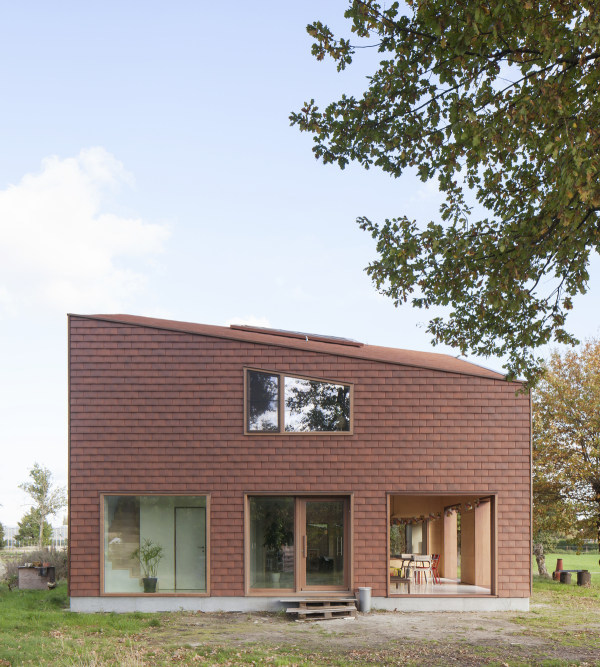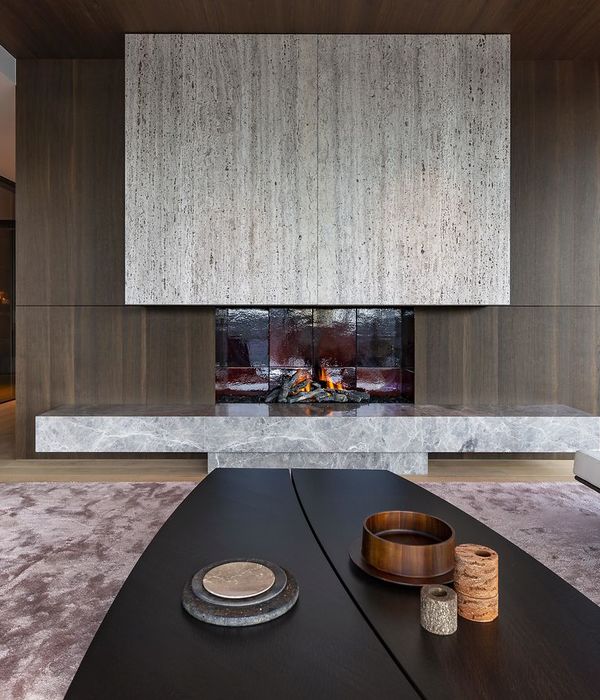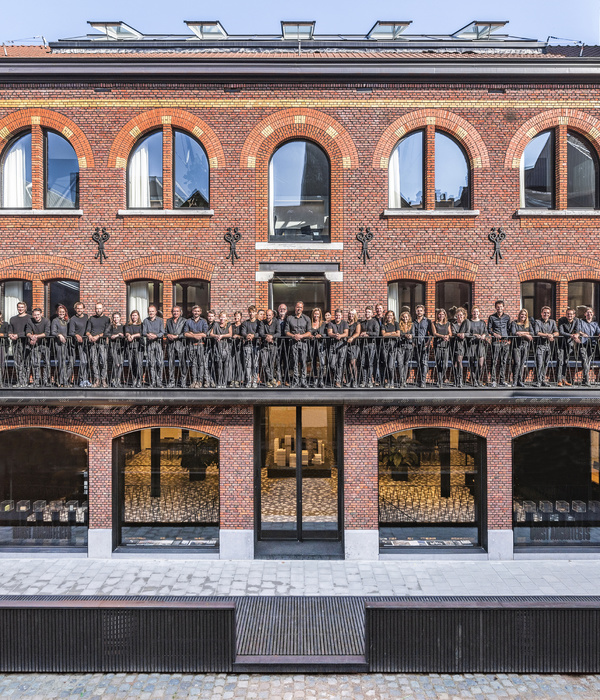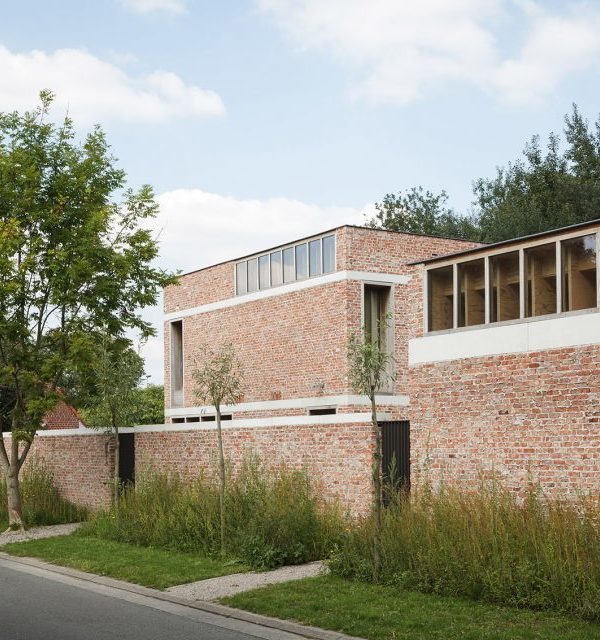Bernaung的意思是庇护行为,早在人类接受房屋概念之前,这种庇护的本能便已经刻在热带居民的DNA中了。这个名字强调了居住在热带地区的人类生活的便利,在这里可以用最少的能源实现舒适的生活和可持续发展。
Bernaung means the act of sheltering, the very DNA that was imprinted within tropical belt inhabitant, long before we embraced the concept of a house. The name emphasizes of how easy it were to live in tropics, that reaching sustainability is nothing but to achieve comfort with the least energy required.
▼项目概览,Overall view © William Sutanto
▼建筑立面,Facade © William Sutanto
▼入口大门,Entrance © William Sutanto
本项目旨在通过设计手段重新安排业主日间的所有活动,并在屋内形成一个循环。中庭作为房屋的中心,既起到视觉方向的作用,由可作为风囱,以确保体量的相互堆叠效果以及自然通风。
▼分析图,analysis diagram © RAD+ar
Design was to rearrange all of user’s activity during the day, and cycle it into as a loop within a giant roof hovering above it. Atrium as the center of the houses acted both as visual direction and wind chimney to ensure cross and stacked effect for natural ventilation.
▼进入建筑,Enter the building © William Sutanto
设计从场地的对角线延伸开始,在视觉上连接花园的边界,使业主能够在建筑的两侧看到天空。设计者框景周围的绿色植物,在Tanggerang繁忙的城市环境中营造出宽敞的花园洋房的错觉。
Stretched diagonally across the site, design was intended to visually connected garden elongated in all sides and to be able see skies in both ending of the building. Design is to frame surrounding greeneries from within and make the illusion of more spacious garden houses within the busy urban context of Tanggerang.
▼起居空间,Living room © William Sutanto
▼餐厅,Dining area © William Sutanto
内部屋顶的天花板采用了单色木材,日间阳光照射进来,在天花板处形成光影效果,夜间室内的照明投影在这里,形成有趣的立面效果。
Internal ceiling of the roof was clad with monochrome timber that acted as an open canvas for natural shadow play during the day, and to frame the lighting element within internal spaces as a façade for the night time.
▼室内楼梯,The stairs © William Sutanto
▼卧室空间,Bedroom © William Sutanto
建筑整体进行了旋转以实现南北的朝向,这样可以最大程度的利用自然光线,同时最大程度减少进入到建筑物内部的热量,屋顶处去掉了中心点的天窗和通风结构以减少热空气的进入,屋顶结构也被调整了朝向,将中庭处的热量直接从西北方向转移出去。
Building was rotated to achieved total north-south orientation in order to optimize natural light while minimize heat exposure entering the building, roof’s center point-which were subtracted for skylight and ventilation to released hot air- were also twisted, moving direct heat from north-west penetrating vertically to the atrium.
▼其它室内空间,Other interior space © William Sutanto
▼材质细部,Materials details © William Sutanto
设计者在此处选择这栋带有夹层的单层房屋进行大跨度结构的实验,是为了证明在这种高度密集的开发房屋之中创造微气候的重要性,本项目占地面积仅为400平方米。
Experiment on wide span structure for a single storey house with a mezzanine was chosen to demonstrate the importance of creating micro climate within as little as 400sqm site packed in dense repetitive surrounding developer houses.
▼夜览鸟瞰,Bird’s eye night view © William Sutanto
▼夜览全貌,Overall night view © William Sutanto
▼夜览立面,Night view of the facade © William Sutanto
带有夹层和对角墙的房屋被置于微型花园之中,设计者对房屋进行了全方位的优化设计——他们巧妙地利用了不同的气流和气压,以及一天当中不同的光影效果——这些都是热带地区的优势,能够以最少的能源实现最舒适的效果。本项目是RAD+ar事务所在东南亚推广低能耗住宅所设计的。
Filled with layers of diagonal walls and sandwiched within micro gardens, design was to optimized all rounded passive design – playing with different air opening and level of air pressure, and light play in different hour of the day- which are the strength of living in tropics to achieve comfort with the least energy as a hope for RAD+ar to promote more low energy residential prototype in South East Asia.
▼首层平面图,ground floor plan © RAD+ar
▼夹层平面图,mezzanine floor plan © RAD+ar
▼剖面图-1,section-1 © RAD+ar
▼剖面图-2,section-2 © RAD+ar
▼剖面图-3,section-3 © RAD+ar
{{item.text_origin}}


